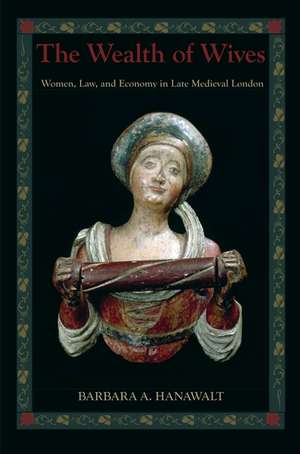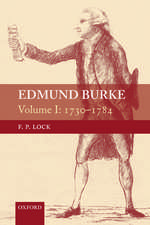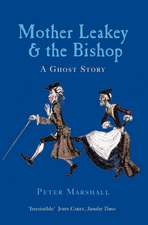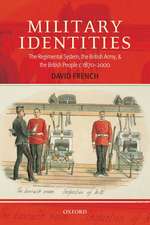The Wealth of Wives: Women, Law, and Economy in Late Medieval London
Autor Barbara A. Hanawalten Limba Engleză Paperback – 18 oct 2007
| Toate formatele și edițiile | Preț | Express |
|---|---|---|
| Paperback (1) | 181.32 lei 31-37 zile | |
| Oxford University Press – 18 oct 2007 | 181.32 lei 31-37 zile | |
| Hardback (1) | 378.72 lei 31-37 zile | |
| Oxford University Press – 11 oct 2007 | 378.72 lei 31-37 zile |
Preț: 181.32 lei
Preț vechi: 197.12 lei
-8% Nou
Puncte Express: 272
Preț estimativ în valută:
34.70€ • 37.81$ • 29.24£
34.70€ • 37.81$ • 29.24£
Carte tipărită la comandă
Livrare economică 12-18 aprilie
Preluare comenzi: 021 569.72.76
Specificații
ISBN-13: 9780195311761
ISBN-10: 0195311760
Pagini: 336
Ilustrații: 10 halftones
Dimensiuni: 161 x 232 x 18 mm
Greutate: 0.48 kg
Editura: Oxford University Press
Colecția OUP USA
Locul publicării:New York, United States
ISBN-10: 0195311760
Pagini: 336
Ilustrații: 10 halftones
Dimensiuni: 161 x 232 x 18 mm
Greutate: 0.48 kg
Editura: Oxford University Press
Colecția OUP USA
Locul publicării:New York, United States
Recenzii
Hanawalt's focus on women's economic roles and activities is a bold way to explore the roles and lives of urban women.... A valuable summary of a complex subject, placed in the context of major themes and areas of scholarly inquiry. The author's usual deft touch in combining numbers, case studies, comparative material, and broad and well-informed judgments shows to advantage.
Leading medieval historian Hanawalt (Ohio State) has created a standard on London, medieval, and women's history.... Not only well researched but also beautifully written, this book's clarity makes it useful to undergraduates as well as scholars.... Essential.
Hanawalt has read the documents in imaginative ways...this book is likely to stand as the clearest look at women in the late-medieval London economy for a long time.
Hanawalt provides fresh evidence, and is judicious about the claims that she makes.
Leading medieval historian Hanawalt (Ohio State) has created a standard on London, medieval, and women's history.... Not only well researched but also beautifully written, this book's clarity makes it useful to undergraduates as well as scholars.... Essential.
Hanawalt has read the documents in imaginative ways...this book is likely to stand as the clearest look at women in the late-medieval London economy for a long time.
Hanawalt provides fresh evidence, and is judicious about the claims that she makes.













